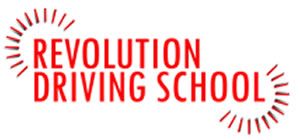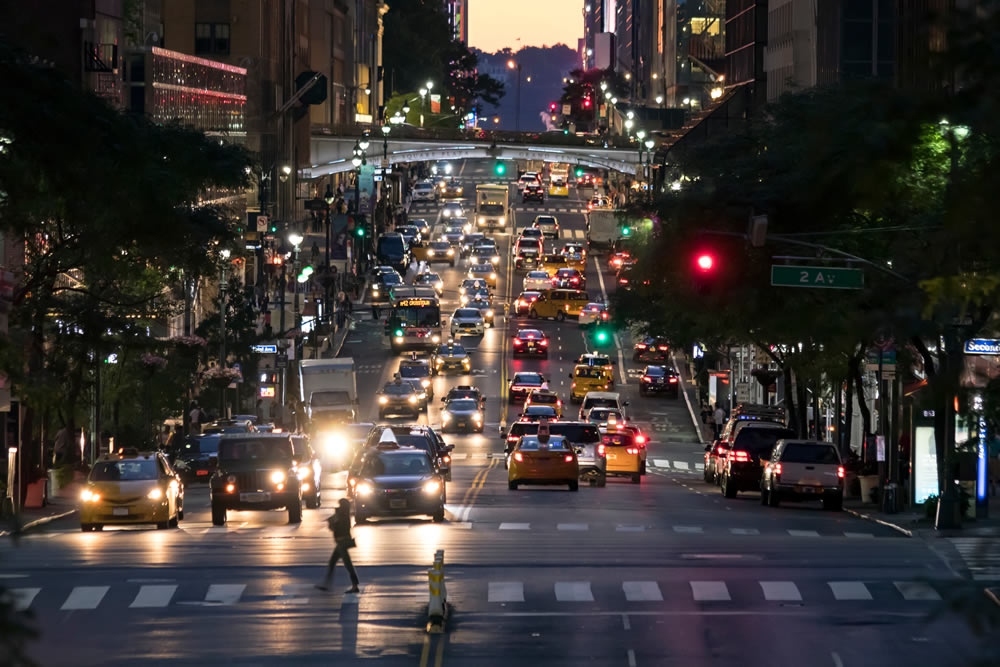Here are some important road rules and tips to be aware of when driving in NYC:
Right of Way:
Pedestrians have the right of way at crosswalks. Always yield to pedestrians.
In the absence of traffic signals, the first vehicle to arrive at an intersection has the right of way.
When making a right turn at a red light, you can do so unless posted otherwise, but you must yield to oncoming traffic and pedestrians.
Speed Limits:
Speed limits can vary throughout the city, but in general, the default speed limit is 25 mph unless posted otherwise.
No Honking:
It's illegal to honk your horn in NYC except in emergency situations. Honking for non-emergency reasons can result in fines.
Bicycle Lanes:
Be aware of designated bicycle lanes and respect them. Do not drive or park in bicycle lanes.
Bus Lanes:
Some streets have dedicated bus lanes. You can only enter these lanes to make a right turn, and you must yield to buses.
Parking Regulations:
NYC has strict parking regulations, and it can be challenging to find parking. Pay attention to parking signs, meters, and rules to avoid fines and towing.
Alternate Side Parking:
Many neighborhoods have alternate side parking regulations, meaning you can only park on one side of the street on certain days of the week for street cleaning.
Grid System:
NYC streets are laid out in a grid system, making navigation relatively straightforward. Odd-numbered streets run east-west, while even-numbered streets run north-south.
Tolls and Bridges:
Be prepared for tolls when using bridges and tunnels to enter or exit Manhattan. Some accept cash, while others only accept electronic payment methods like E-ZPass.
No Turn on Red:
Some intersections may have signs prohibiting right turns on red lights. Always obey these signs.
School Zones:
Slow down and exercise extra caution in school zones when children are present.
Bus Stops:
Do not stop or park in bus stops, as this can impede public transportation.
Traffic Cameras:
NYC utilizes red light cameras and speed cameras at various intersections. Fines will be issued for violations caught by these cameras.
Use Public Transportation:
Consider using the subway, buses, or other forms of public transportation instead of driving, as traffic congestion and limited parking can make driving challenging.
Be Patient:
NYC is known for its traffic congestion. Be patient and prepared for delays, especially during rush hours.
Pedestrian Safety:
Be extra cautious when driving near crowded areas and always yield to pedestrians, especially in busy Manhattan streets.
Remember that parking and traffic regulations can vary from one neighborhood to another, so it's essential to read street signs carefully and be aware of local rules. Additionally, staying up-to-date on any changes in NYC traffic regulations is advisable, as they can evolve over time.
NYC Parking
Parking in New York City (NYC) can be challenging due to limited space, strict regulations, and high demand. Here are some important things to know about parking in NYC:
Street Parking:
NYC has various parking zones, including commercial, residential, and metered parking. Be sure to check street signs for specific regulations and time restrictions.
Alternate side parking rules are prevalent in many neighborhoods. On designated days, you must move your vehicle to the opposite side of the street to allow for street cleaning. Violations can result in fines and towing.
Some areas have parking meters that require payment during certain hours. Payment methods may include coins, credit cards, or mobile apps.
Always be aware of fire hydrants and crosswalks, where parking is prohibited.
Parking Garages:
Parking garages are available throughout the city, and they can be a convenient option, especially if you're unable to find street parking.
Rates at parking garages can vary widely, so it's a good idea to compare prices and check for discounts or special offers.
Many parking garages offer valet service for an additional fee.
Residential Parking Permits:
Some residential neighborhoods have permit parking systems that restrict non-residents from parking in certain areas. Check for residential parking zones and permit requirements in your area.
Parking Signs:
Pay close attention to parking signs, as regulations can change frequently. They often indicate specific hours when parking is allowed or prohibited.
Be cautious of "No Parking" or "No Standing" zones, as violating these restrictions can result in tickets and towing.
Parking Tickets and Fines:
Parking violations can result in fines, and unpaid tickets can lead to booting or towing of your vehicle.
If you receive a parking ticket, follow the instructions on the ticket for payment or dispute options.
Street Cleaning:
Street cleaning schedules vary by neighborhood. Make sure to check the posted signs for street cleaning days and times to avoid getting a ticket.
Residential Parking Permits:
Some residential neighborhoods in NYC have permit parking systems, which restrict non-residents from parking in certain areas. Be aware of these zones and permit requirements in your area.
Parking Apps:
Consider using parking apps like SpotHero, ParkWhiz, or ParkMobile to find available parking spaces and reserve spots in advance.
Bike Lanes and Curb Regulations:
Be mindful of designated bike lanes and curb regulations, as parking or standing in these areas is prohibited and can result in fines.
Navigating parking in NYC can be complex, so it's essential to plan ahead, be patient, and carefully read parking signs to avoid violations and fines. If you're unfamiliar with parking regulations in a specific neighborhood, you can check the NYC Department of Transportation (DOT) website or contact the local authorities for guidance.
NYC Bridges And Tunnels
New York City (NYC) is connected by a network of bridges and tunnels that facilitate transportation between the city's boroughs and surrounding areas. Here are some of the most notable bridges and tunnels in NYC:
Bridges:
- Brooklyn Bridge: One of the most iconic landmarks in NYC, the Brooklyn Bridge connects Manhattan and Brooklyn over the East River. It's open to vehicles, pedestrians, and cyclists.
- Williamsburg Bridge: This bridge connects Manhattan and Brooklyn, providing vehicular, pedestrian, and bicycle access. It's known for its distinctive design and is an important transportation route.
- Manhattan Bridge: Linking Manhattan and Brooklyn, the Manhattan Bridge accommodates vehicular traffic, subway lines, pedestrians, and cyclists.
- Queensboro Bridge (59th Street Bridge): This bridge connects Manhattan and Queens. It has upper and lower levels, with the upper level carrying vehicular traffic and the lower level accommodating subway lines, pedestrians, and cyclists.
- George Washington Bridge: Located further north, this bridge connects Manhattan and Fort Lee, New Jersey. It's a vital vehicular and pedestrian link between NYC and New Jersey.
- Verrazzano-Narrows Bridge: Spanning between Brooklyn and Staten Island, this suspension bridge is one of the longest in the United States. It's for vehicular use only and provides stunning views of the harbor.
- Throgs Neck Bridge: Linking the Bronx and Queens, this suspension bridge serves as a critical route for vehicles traveling to and from Long Island.
Tunnels:
- Lincoln Tunnel: The Lincoln Tunnel connects Manhattan and Weehawken, New Jersey, providing a major route for vehicular traffic heading westward from NYC.
- Holland Tunnel: Also connecting Manhattan and New Jersey (Jersey City), the Holland Tunnel is an essential link for commuters traveling between the two states.
- Queens-Midtown Tunnel: This tunnel connects Manhattan and Queens, providing a route for vehicular traffic traveling between these two boroughs.
- Brooklyn-Battery Tunnel (Hugh L. Carey Tunnel): Linking Manhattan and Brooklyn, this tunnel primarily serves vehicular traffic and is a key passage under the East River.
- Hugh L. Carey Tunnel (formerly Brooklyn-Battery Tunnel): This tunnel connects Manhattan and Brooklyn, primarily for vehicular use.
- Queensway Tunnel (Montague Street Tunnel): Connecting Manhattan and Brooklyn, this tunnel carries subway lines (N, R, and W trains) between the two boroughs.
Note that many of these bridges and tunnels have tolls for vehicles. It's essential to be aware of the toll costs and payment methods (including electronic toll collection systems like E-ZPass) when using these crossings. Additionally, traffic conditions on these routes can vary, so it's a good idea to check for real-time updates if you plan to drive across them, especially during peak hours.

